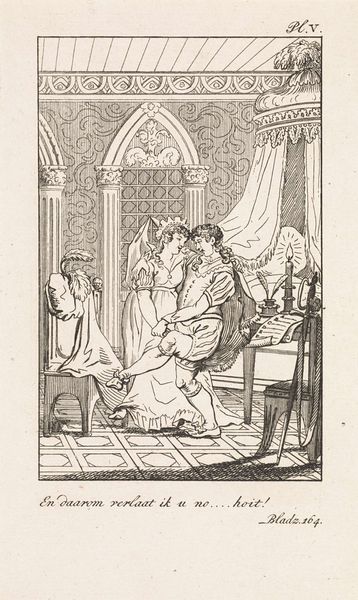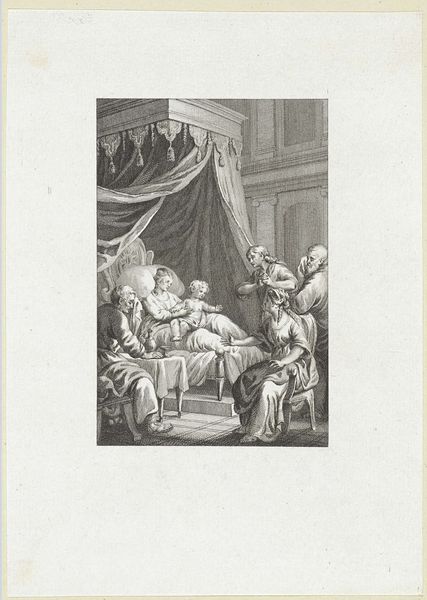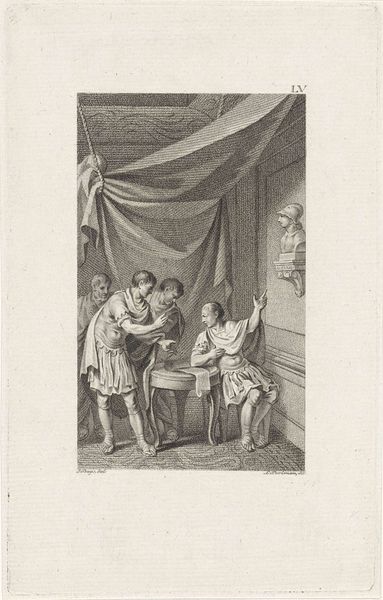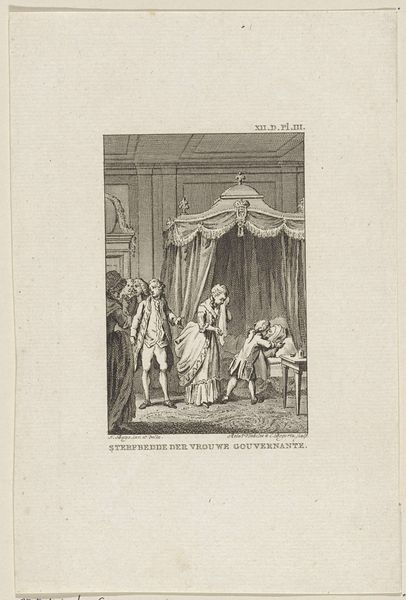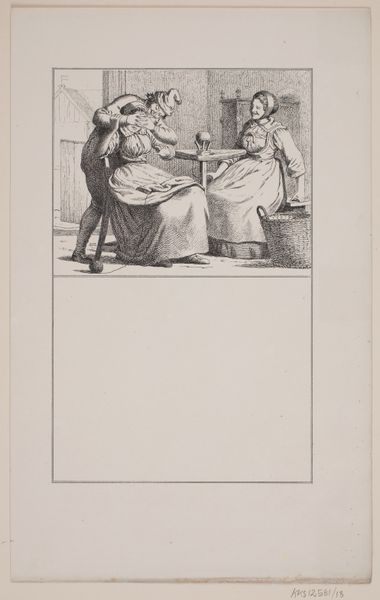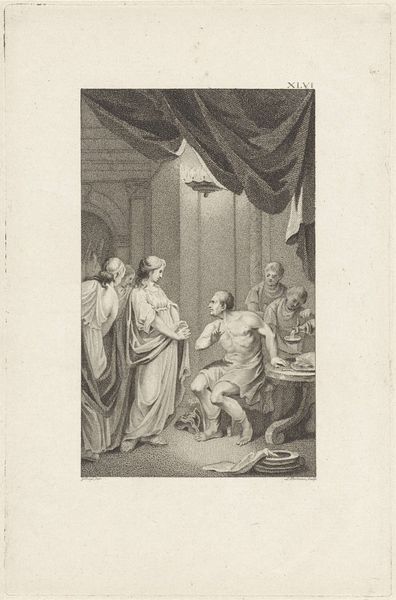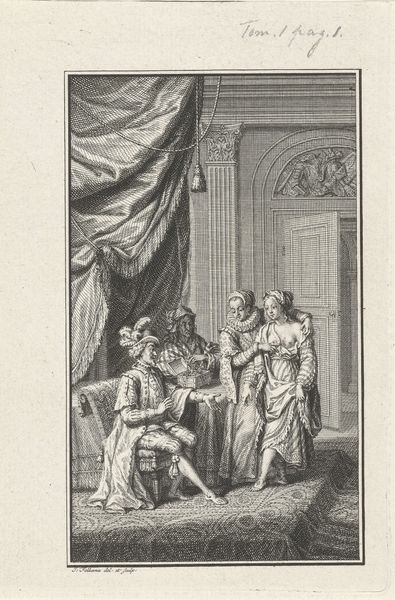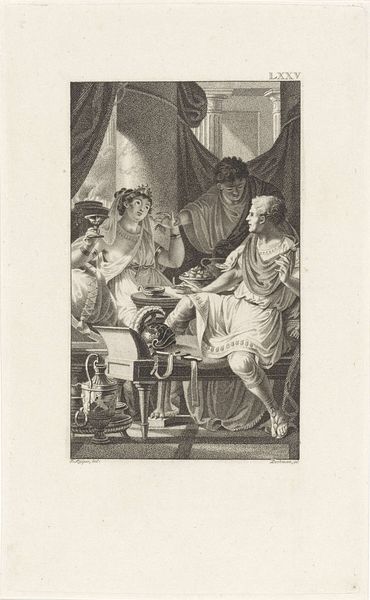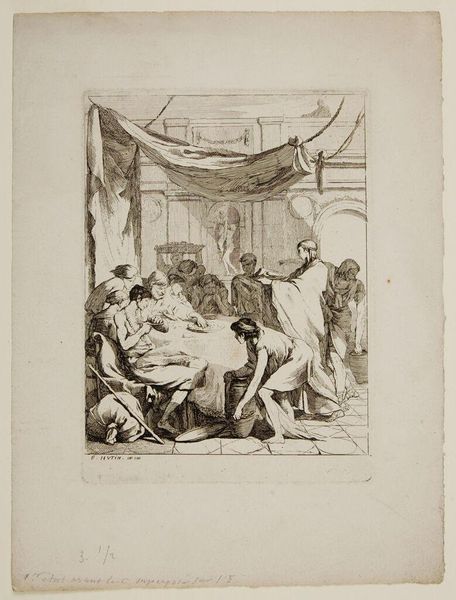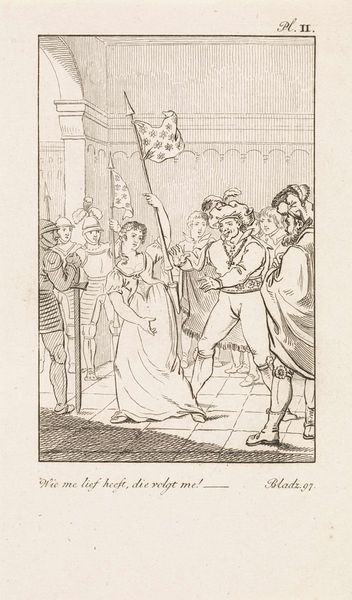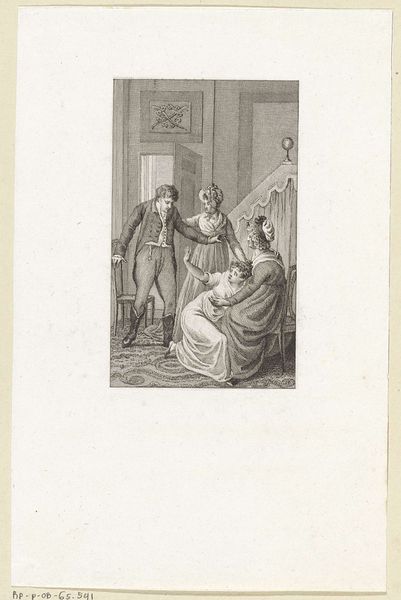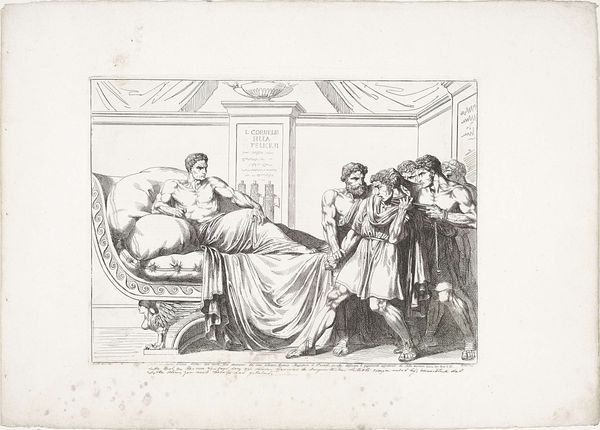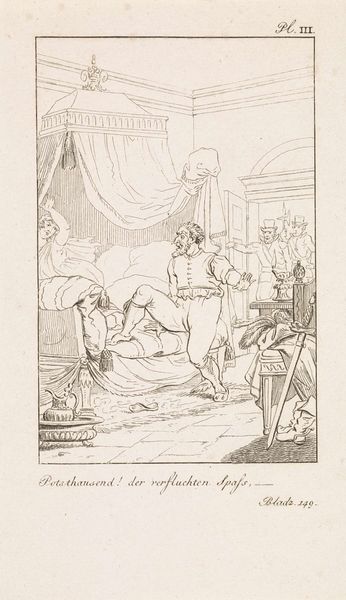
print, engraving
#
neoclacissism
#
allegory
# print
#
landscape
#
classical-realism
#
figuration
#
line
#
history-painting
#
engraving
Dimensions: height 143 mm, width 98 mm
Copyright: Rijks Museum: Open Domain
Curator: The artwork we’re observing here, residing at the Rijksmuseum, is an engraving from 1833 entitled “Huwelijk tussen Apollo en een jonge dame,” or "Marriage between Apollo and a young lady," created by Daniël (I) Veelwaard. Editor: Well, my immediate reaction is that it's staged, and slightly absurd. Apollo looks stiff, the bride seems rather bland, and that character to the left has such a grotesque profile, so unlike classical figures. It gives a slightly satirical impression. Curator: I find that's precisely the point. Veelwaard operated within a neoclassical context but wasn’t beyond injecting social commentary through the art. While classical subjects gained traction and lent themselves to the aesthetic, it was frequently appropriated for political or social purposes. Notice the engraver, officiating the contract, represents, perhaps, not the purity of love, but the transactional and controlled aspects of marriage? Editor: True, but Apollo looks less like a radiant god of poetry and light, and more like a stage actor awkwardly holding a prop bow. He is there just to provide the classical touch, while the image says something else about control of love through legal agreements and the social role it represents for men and women. What about her apparent lack of excitement about this union with a god? Her eyes and pose show sadness more than happiness. Curator: Indeed, and if you examine other artworks from this time period that feature marriages or unions, especially of notable figures, you might find they exhibit a specific degree of staged-ness and emotional remove. Public art had a civic duty: so to show personal, complex emotion perhaps flew in the face of creating acceptable public image. The woman looks unhappy in the presence of a smiling man which serves as contrast between legal rights versus the lack of emotion. Editor: I see that. Knowing more about its creation during that historical period definitely sheds a new light on the artwork. While on first view I see caricature and bad acting, a closer look at its context does illuminate themes of control, contracts and a questioning about the roles involved. The artist's decision to use engraving to recreate an otherwise classical representation of Apollos reinforces, to me, those statements of institutional control. Curator: It's those very societal influences—political undertones embedded within classical idealism—that keep "Huwelijk tussen Apollo en een jonge dame" a compelling case study, I think, for art and its public role. Editor: And it reminds me of how important it is to look beyond surface representations, in any art piece. Thanks for walking me through this one!
Comments
No comments
Be the first to comment and join the conversation on the ultimate creative platform.
